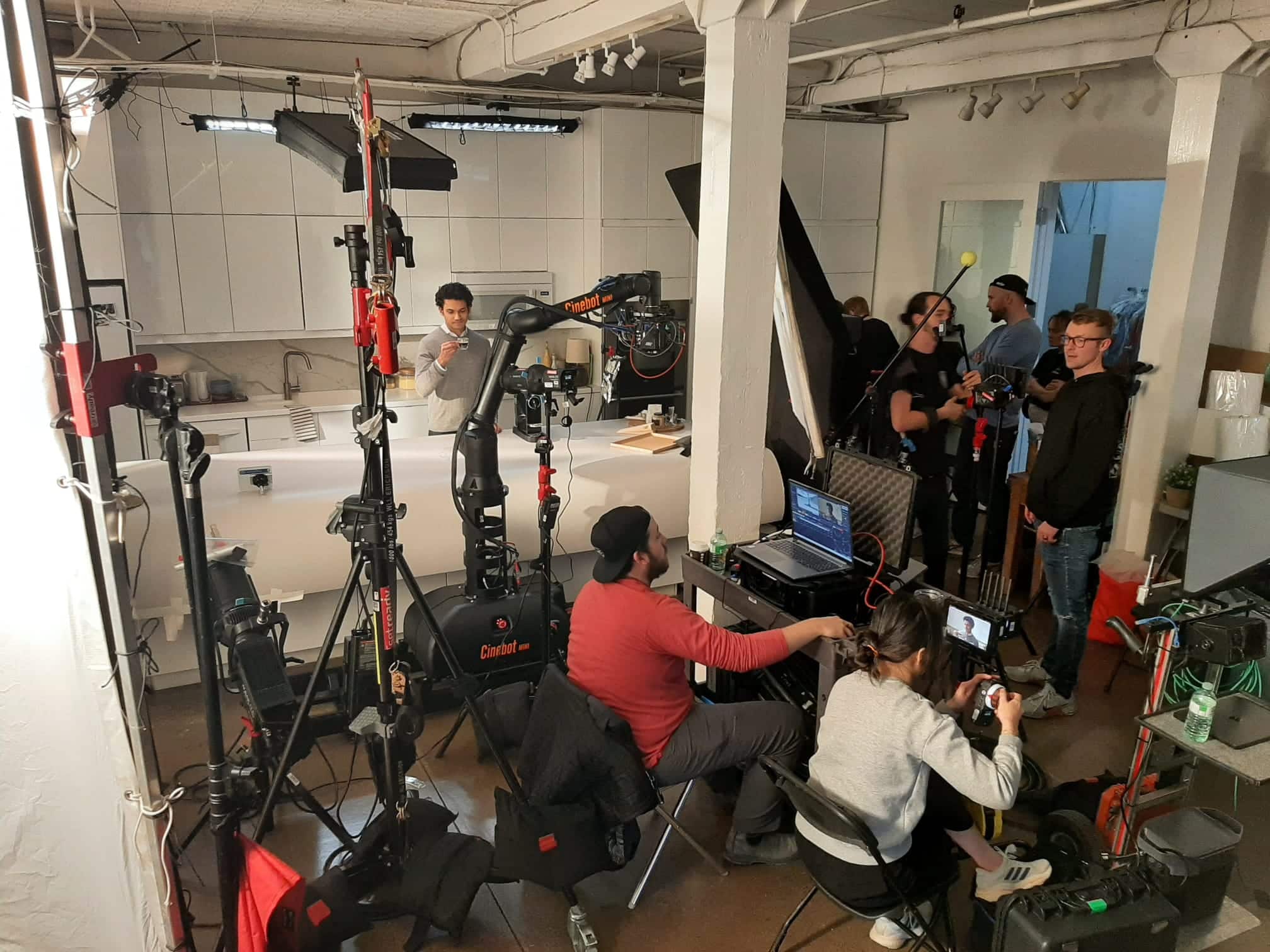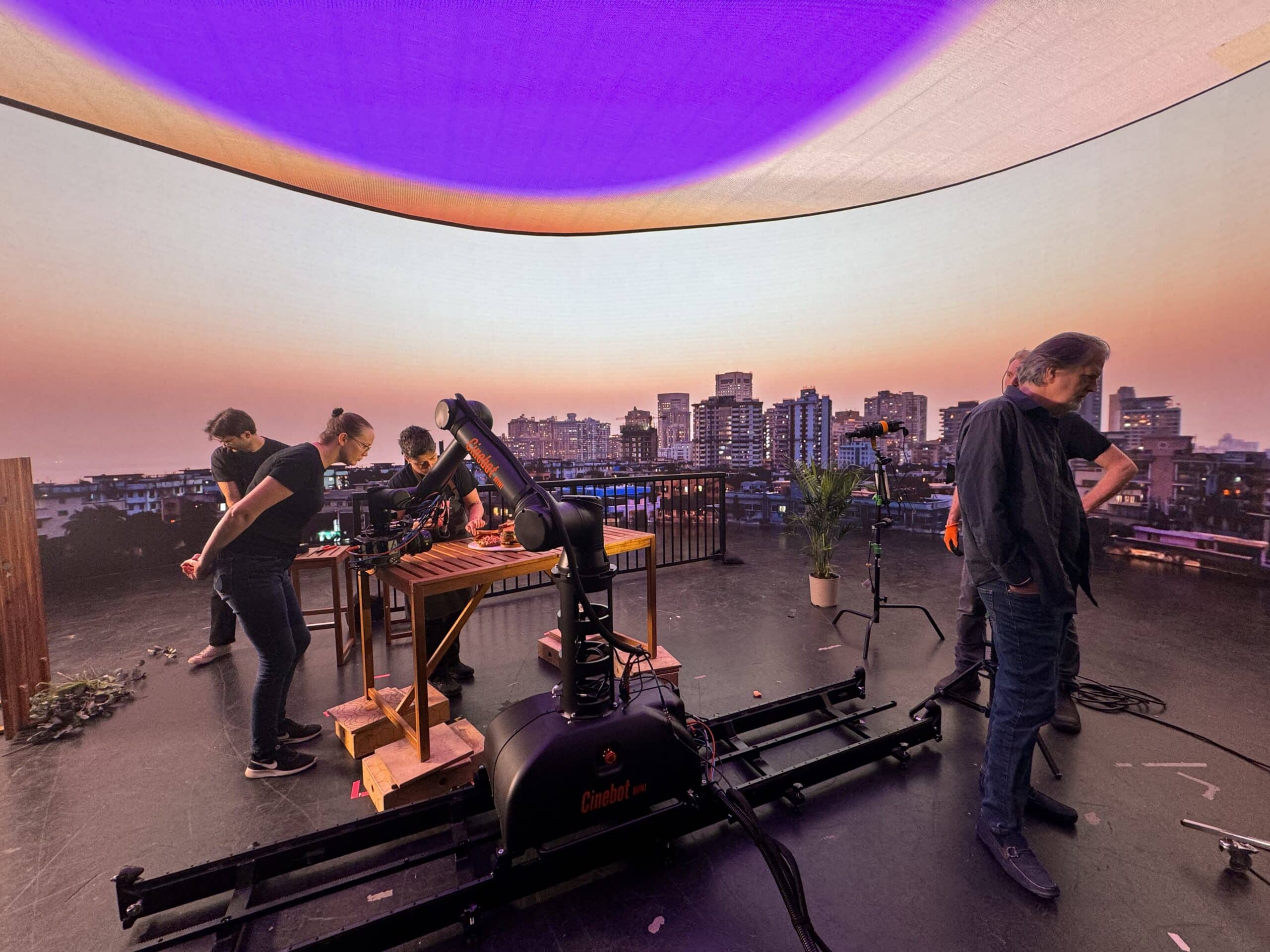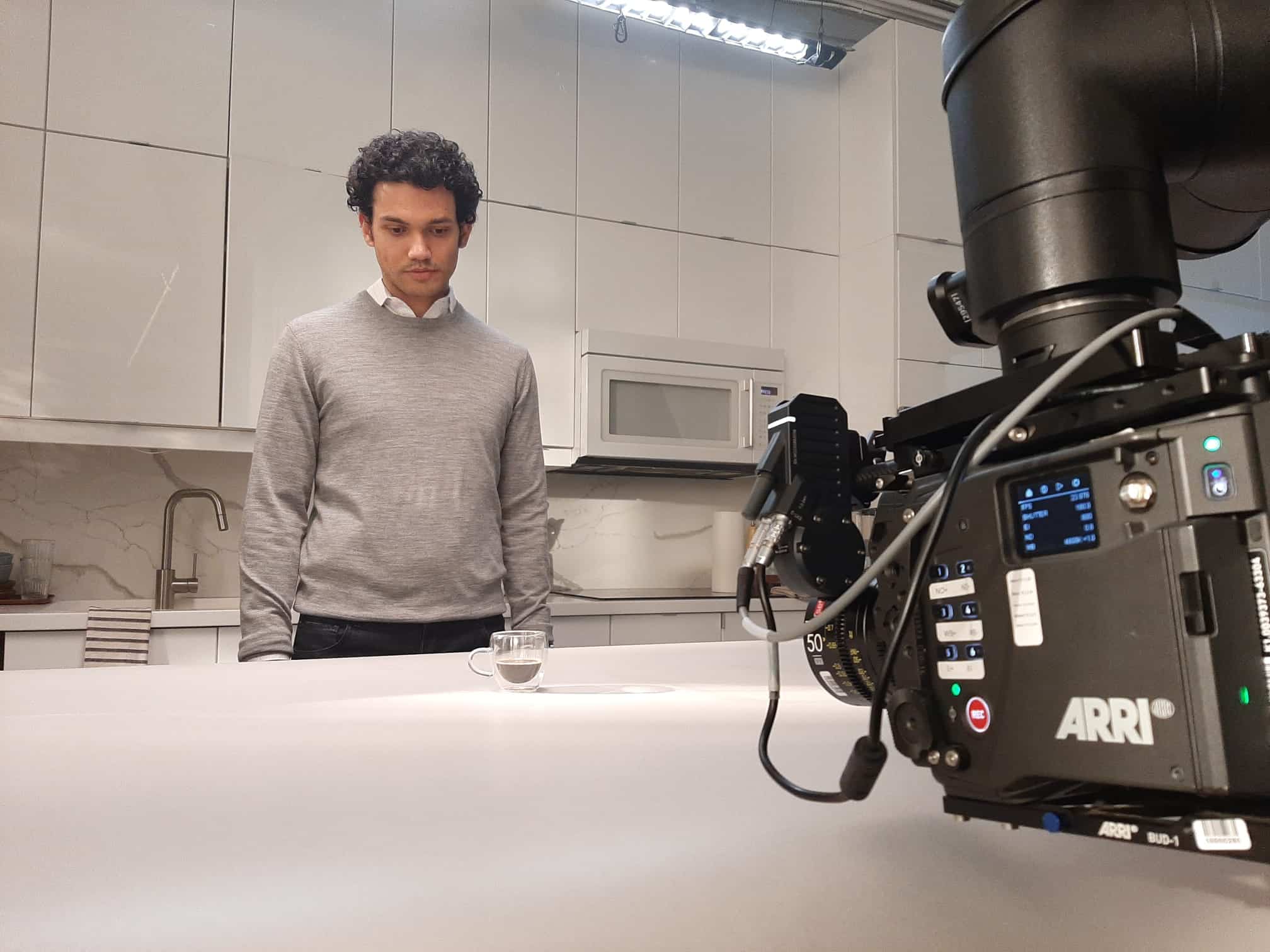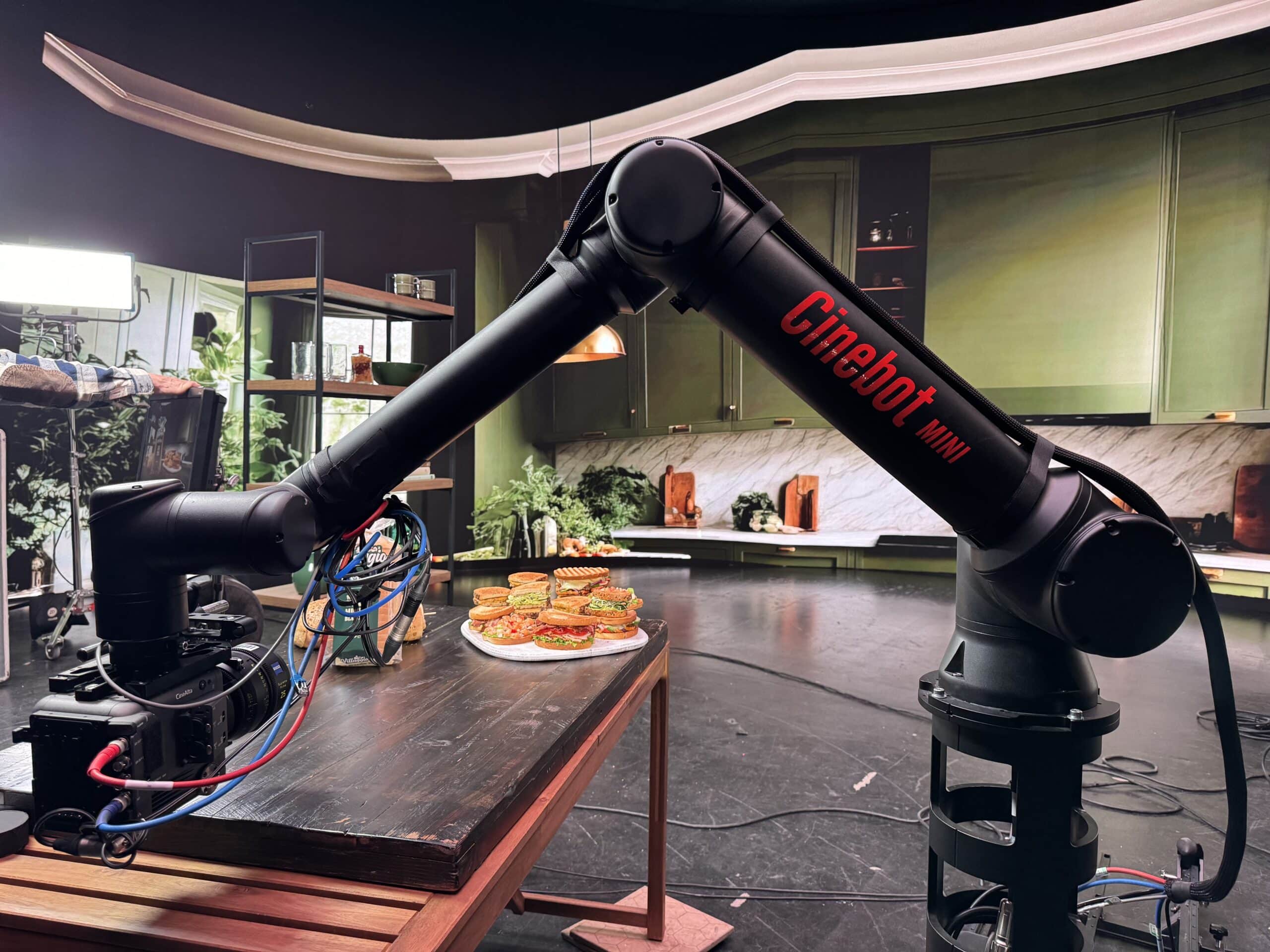Cinebot Mini changes the game for 2D House
CASE STUDY
Toronto-based motion control rental house 2D House became one of the first clients of MRMC to get their hands on the Cinebot Mini and quickly put it to good use. Recently shooting some visually impressive spots for both McDonald’s and Villaggio, they found its ease of use and compact build to speed up the production process tenfold.
Toronto-based motion control rental house 2D House became one of the first clients of MRMC to get their hands on the Cinebot Mini and quickly put it to good use. Recently shooting some visually impressive spots for both McDonald’s and Villaggio, they found its ease of use and compact build to speed up the production process tenfold.
PROJECT OVERVIEW
2D House made the strategic decision to incorporate the Cinebot Mini into their film arsenal with the confidence that its portability and user-friendly design would make it an ideal solution for on-location shoots. This decision would prove invaluable when DP Nik Pilecki reached out mid-production for his shoot with McCafé, seeking to infuse the commercial with dynamic and creative camera movements to enhance its visual appeal. The Cinebot Mini would need to arrive on set, ready to go at a moment’s notice, poised to bring Nik’s vision to life in the least amount of time possible.
Conversely, Director/DP Eric Yealland, entrusted with crafting a commercial for the sandwich brand Villaggio, had motion control in mind from the project’s inception. However, tight budget constraints compelled him to seek a solution that could add some “wow” factor to the commercial without breaking the bank; positioning Villaggio as more than just bread but as the heart of social occasions. Once again, the Cinebot Mini would need to prove its worth by completing the shoot as quickly as possible for a smaller budget.
Each shoot presented unique demands, with McCafé requiring quick transportation and on-the-fly versatility, while Villaggio called for meticulous planning within budget constraints. The versatility of the Cinebot Mini was put to the test and it needed to demonstrate its ability to excel in diverse shooting scenarios.
Sometimes you get a repetitive job with a lot of tedious cuts, but with the Cinebot Mini, you can blend shots together and add dynamic movement to make it flow much better. Grips can get creative with a dolly and a riser and say “I think I can get it for you”, but the Mini guarantees it, and fast.
2D House

THE CHALLENGE
Navigating the challenges of commercial shoots can be daunting, especially when tight budgets, time constraints, and creative demands are at play. For 2D House, these challenges were particularly pronounced during their work on the McCafé and Villaggio projects.
For the McCafé shoot, the goal was to achieve smooth, rolling camera movements, capture top-down shots, and get the camera into challenging positions within the tight-spaces of a kitchen environment. These shots typically require extensive gripping and dollying work, which is both time-consuming and labour-intensive. However, the urgency of the McCafé project added another layer of complexity. 2D House was brought in at the last minute, leaving no time for pre-programming moves or visualising shots in advance. This urgency demanded a flexible and adaptable approach to achieve dynamic camera movements and creative shots quickly.
Meanwhile, the Villaggio project posed its own set of challenges. With a limited budget, the shoot needed to be completed quickly to conserve resources; was of the essence. Moreover, the shoot required precise motion control to showcase tables at different heights. This can be difficult for both post-production and the talent needing to do the same takes over and over but from widely different perspectives. Additionally, the team aimed to create high-end visual effects using motion control to track camera movements and synchronise the background for a realistic parallax effect. These complex requirements added pressure to an already demanding schedule, emphasising the need for efficient and effective motion control solutions.

The Solution
The McCafé project was one of the first jobs 2D House tackled after acquiring the Cinebot Mini just a week earlier, and it immediately exceeded all expectations. 2D House were able to quickly pack up the robot and bring it on set, assembling it in minutes, ready to go for the urgent demands of the shoot.
Its unique PushMoco® feature allowed 2D House to improvise and create moves on the fly in collaboration with DP Nik Pilecki, eliminating the need for pre-programming entirely. This flexibility not only saved precious time but also empowered the team to adapt to the dynamic requirements of the shoot as it progressed.
The team could easily set points and roll levels, with the Cinebot Mini automatically adjusting even if manual points weren’t perfectly level. This significantly sped up the setup process, which usually involves a lot more meticulous tweaking.
The Mini’s ability to quickly position the camera in tricky spots, like the edge of a countertop, was a major advantage. Instead of repeatedly setting up grip equipment for 40 minutes at a time, with no guarantee of even getting the shot you want and at the expense of time, labour, and budget each go, the team could place the Mini close to the table, positioning the arm with PushMoco® to just start shooting immediately.
The Cinebot Mini works incredibly fast, allowing everyone to see results in real time. It removes those communication barriers by letting you show exactly what you want the shot to be there and then. This tool fit perfectly into my workflow, allowing me to make quick, dynamic adjustments on the go. It enhances creativity and inspiration instead of stifling it.
Hungry Boy Videos

During the shoot for Villaggio, the Cinebot Mini proved indispensable once again. Despite the project’s tight timeframe, the Mini’s intuitive controls and real-time feedback allowed operators to fine-tune shots on set to perfection.
The shoot was initially projected to span several days, but with the introduction of the Cinebot Mini, that time was cut down to just 10 hours. 2D House spent one day pre-programming the overall move for the project and used it to experiment freely on the shooting day. This flexibility enabled 2D House to quickly adjust timing for each scene without having to redo the entire move each time. With an average of six takes per scene, the Mini consistently nailed each shot.
Over at at 2D House’s virtual production studio The Mirage, the Cinebot Mini also demonstrated its versatility by mimicking the effects of an Unreal Engine envirionment at a fraction of the cost. Director/DP Eric Yealland and volume operator James Hughes created an Unreal perspective by programming the background to move in sync with the shot, adjusting for correct parallax. This allowed for alterations of 200 pixels to fine-tune the manoeuvre, resulting in rock-steady motion control and a visually-striking Unreal-effect. The Cinebot Mini’s real-time production workflow offered an organic feel, working with different backgrounds to produce results on the spot.
Flair further enhanced the Mini’s capabilities, particularly in addressing the challenge of varying table heights during the Villaggio shoot. The offset was applied through Flair to create seamless adjustments, eliminating the need to standardise table heights for each shot and allowing the actors to act naturally rather than pretend they were at different heights. By leveraging the capabilities of the Cinebot Mini, 2D House navigated the challenges of the Villaggio shoot with confidence, delivering results that surpassed expectations.
The Cinebot Mini is an amazing tool, perfect for working within tight budgets in a world where it’s increasingly difficult to do so. Its ease of use and portability are fantastic, allowing it to get the job done quickly and reach areas you’d never dream of, like behind counters or through tight doorways. It’s one of the best tools a director or cinematographer can have.
Upshot Studios

We combined these two use cases to demonstrate how the Cinebot Mini excels in productions with entirely different requirements. The McCafé project required reactive and flexible motion control, while Villaggio demanded technical, pre-planned precision. The Cinebot Mini was able to perform exceptionally in both scenarios, delivering arguably the most important aspect of motion control in a single package: consistency. Whether the shoot demands quick adjustments or precise control, the Cinebot Mini proves to be a fast, portable, and versatile camera robot capable of meeting the diverse needs of any project, consistently producing stunning work with motion control.
CREDITS
MCCAFÉ
Michael Alberstat / Director
Nik Pilecki / DP
Noble Content / Production Company
Cossette / Agency
Josh Ellis-Tufts / Motion Control Operator
Alice Do / 1st AC
Roham Abtahi / Gaffer
John Perrin / Key Grip
VILLAGGIO
Villaggio – Bimbo Canada:
Alistair Senn / Marketing Director
Maryna Shcherbyna / Marketing Manager
Sarah Liou / Assistant Marketing Manager
2D House:
Josh Ellis-Tufts / Motion Control Operator
The Mirage:
James Hughes / LED Volume Operator
Makers:
Taylor Childs / Agency Producer
King Ursa:
Kruthika Jayakumar / Account Director
Skye Brain / Business Lead
Caroline Hicks / Agency Producer
Steven Tiao / ACD Art Director
Kevin Hoessler / ACD Copywriter
Impossible Studios:
Eric Yealland / Director
Marco D’Angelo / Executive Producer
Marc Swenker / Line Producer & PM
Chris Poowah / Production Coordinator
